Missed Qualcomm’s Snapdragon Tech Summit 2018? It’s All In Here
by Ian Cutress on December 19, 2018 8:00 AM EST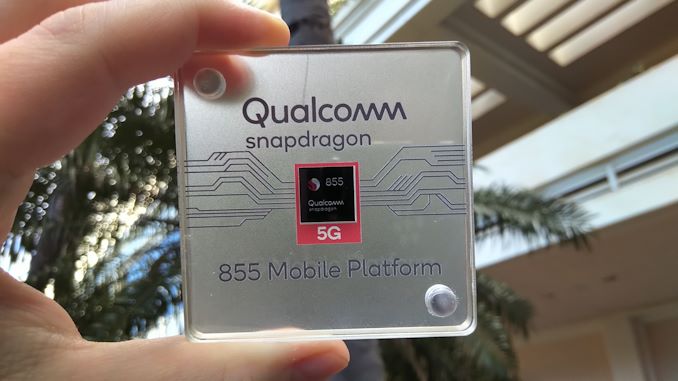
If there’s one thing I love about this job, it’s about finding what makes the companies in our industry tick. This goes above and beyond just the product announcements, the reviews, or user experiences: it pays off to take heed of what a company is saying, how they are saying it, and how people inside the company feel. This is why Qualcomm’s annual Snapdragon Tech Summit is such a big deal: it’s hard to move in the smartphone space without bumping into Qualcomm, so an opportunity for the company to cover the technical aspects of its 2019 product goals is the prime time to analyze and scrutinize one of the biggest businesses in our industry. Here’s an overview of what happened through the week.
Day One: Let’s Discuss 5G
Being a company investing in wireless, and with 5G being the next big set of wireless technologies, Qualcomm took the time to explain why it is leading in this field. The first day keynote was run by the President of Qualcomm, Cristiano Amon, who we interviewed later in the day. Before we can get 5G into the hands of users and inside devices, the infrastructure has to be there, and as a result there were presentations from the two largest US carriers, Verizon and AT&T. Both companies are racing to deploy various forms of 5G in cities across the US, and the title of being first are very important to them. Truth be told, Verizon’s presentation seemed stronger than AT&T, but both companies are very committed to 5G rollout through 2019 and into 2020. We also saw Everything Everywhere, a carrier in the UK, discuss its plans for 5G rollout and trial sites in London. At the end of the presentation, Qualcomm revealed the name of its new smartphone SoC, the Snapdragon 855, with more details to follow the next day.
Click here to read our round-up of the day one keynote announcements.
After the keynote was demo time. Both AT&T and Verizon had installed small cell mmWave 5G networks in separate demo rooms, running on different frequencies. In each case we saw 5G mobile hotspots being used from Netgear and inseego, with these devices containing both the Snapdragon 855 SoC and X50 modem, along with a battery. In the Verizon room, we also saw Motorola’s 5G moto mod in action for the first time with the moto z3 smartphone, and it also has the S855+X50 combo, but also with 10 antennas inside. We also saw the insides of Qualcomm’s Snapdragon 855 5G smartphone reference design. There was also an unnamed Samsung 5G-enabled smartphone doing video streaming, however the device remained in black-screen mode to avoid users looking at the funny notch it had.
To end the day, we had a 1-on-1 interview with Cristiano Amon, questioning him on Qualcomm’s expected return on investment on 5G, when 5G is coming to the mid-range, what use cases can 5G have for suburbia/rural communities, and how Qualcomm perceives Apple’s single-threaded performance advantage. It’s a great read – many thanks to Cristiano and his team for taking the time for us.
Day Two: All About Snapdragon 855
The second keynote of the event focused on the smartphone SoC that is going to power the majority of 2019 Android flagships, the Snapdragon 855. This is Qualcomm’s first entry into the 7nm manufacturing node, and under the hood we get some beefy specifications: eight Kryo 385 cores, one boosting up to 2.84 GHz, Adreno 640 graphics, a much bigger Hexagon 690 DSP, a faster X24 modem capable of 2 Gbps, and plenty besides.
You can read the initial announcement of the hardware, or for more hardware details, Andrei wrote an in-depth article covering as much detail as we got our hands on.
A key part of the Snapdragon 855 is the ‘4th Generation AI Engine (AIE)’, which combines the CPU, GPU, and DSP into a powerhouse for AI workloads. Aside from the CPU and GPU improvements, Qualcomm highlighted the updates to the DSP, doubling the vector units but also by including a tensor extension unit, promising 2x the AI performance of any 7nm smartphone on the market today and 3x the AI performance of the previous generation. All this, while consuming less power. Qualcomm rates the S855 at a peak 7+ TOPS. There’s also the Spectra 380 ISP, which has new built-in Computer Vision hardware to accelerate things like object detection and replacement, enabling in-video bokeh and other features.
On stage to help promote the Snapdragon 855 was OnePlus, with CEO Pete Lau there to announce that the company would be (one of) the first with a Snapdragon 855 smartphone in its 2019 flagship device. A few fun facts came out after the presentation, such as Pete Lau suggesting the potential price increase of a 5G enabled phone, as well as some discrepancy in the English and Chinese slide decks. It was also stated that OnePlus would have two lines of smartphones, one with 5G and one without.
In the demo rooms after the keynote, Qualcomm used the opportunity to show a number of Snapdragon enabled devices, focusing on some new features that app developers can bring. This includes using the AI engine for noise reduction with only a single microphone, 4K HDR10+ video capture, and improved audio playback. Some of these features require smartphone manufacturers to license the technology, so it wasn’t as ubiquitous as Qualcomm made it seem, and few journalists seemed to realise that. Qualcomm also had a demo showing that the new chip is 802.11ax-ready, with a congested network environment outperforming 802.11ac on older devices.
An important demo from Qualcomm was a power consumption test, showing how the S855 compares to the S845 in things like web browsing and video games. These tests took the power consumption at the battery level, so they were device tests and not just SoC tests, so they included the radios and the display and every other microjoule component. As a result, any conclusion from the test was as set in stone as some other demonstrations: the screens were not calibrated, for example. We wrote up a piece on this, but have a read yourself and see what you think about the demo.
Day Three: Snapdragon 8cx and ACPCs
To finish up the event, the final keynote was to announce the chip that will power the next generation of Always Connected PCs, the Snapdragon 8cx. In a different strategy to previous generations, Qualcomm has decided to create a fully separate chip for its PC strategy, and this chip is bigger and more powerful for that market.
The point of having the bigger chip, with a higher maximum power consumption, shows the difference in the mobile market compared to the PC market. Here the 8cx has eight Kryo 395 cores (with one of the demo units listing 2.75 GHz as a potential speed), a much larger Adreno 680 graphics solution that promises to be 2x the capability of the Snapdragon 850 graphics, a built in X24 2 Gbps LTE modem, and all the AI capabilities of the smartphone chip but more powerful. There’s also double the memory bandwidth, to bring the bus width on par with x86 processors. The headline numbers from Qualcomm listed the device outperforming any 15W Intel processor at 7W, with better sustained performance, at a much lower power.
The key push with this chip and technology this time around was towards the enterprise market, which is where this sort of product has been aiming at all along. On stage during the presentation was Lenovo, detailing how they are committed to always connected laptops but stopping short of actually announcing a product. (The goal here for Qualcomm would be to have a ThinkPad variant, obviously.) Microsoft also came to the stage to announce that the Snapdragon 8cx will support Windows 10 Enterprise, along with Office 365 applications natively.
You can read our deeper analysis of the Snapdragon 8cx announcement here.
In the demo rooms, the key item that I made a bee-line for was the full 7nm waver of Snapdragon 8cx chips. With a clear enough photo, we were able to determine the die size of the chip, and copying the transistor density of the 855 gives us a rough figure for the total transistor count of the chip. To some it’s an arbitrary number, but it is still an interesting figure to have.
Also in the demo room were several reference devices showing off some of the features of the chip, such as supporting dual 4K displays on top of the laptop display. In speaking with the Lenovo representative later in the day, it was clear that Qualcomm is still a way off from actually launching the product. We predict that we might see some product announcements at Computex in June, with devices on shelf in Q3.
Highlights and Thoughts
The Qualcomm Snapdragon Tech Summit was attended by 330+ press and analysts, so it is a pretty big event. At this size, because of the range of press, there is a big desire to cover a lot of ground but not go too deep. As a result we have to take advantage of the 1-on-1 time, such as our interview with Cristiano, or with the representatives to get details like cache sizes or how the company approaches mixed precision AI calculations. But nonetheless, we have some good details about the Snapdragon 855 SoC, and can’t wait to test it when it is ready, for both performance and power.
When it comes to the announcements on 5G and the 8cx, the road is a little fuzzier.
For 5G, it is very clear that it is a technology of the upcoming decade, and it’s going to take a while for it to come to everyone en masse. When you deal in release timescales of years, it is hard to keep the same level of excitement throughout like a smartphone product cycle, and for sure I’m getting email fatigue from every little minor 5G announcement. That being said, I think the roll out for implementations of 5G look to be on track, although consumer 5G is likely to be further away than device manufacturers would like you to believe. Unless users want a mobile hotspot, it will strictly be an early adopter technology only.
For the Always Connected PCs, it was telling that when we spoke to people who sell them, these devices seem to sell when the message is focused around battery life more than connectivity. This doesn’t sound great when Qualcomm’s main message is all about the connectivity. The data plans around ACPCs have to catch up to make this market more viable. However given that Lenovo had part of the keynote, and the talk was focused on Enterprise and security, I highly suspect that when the 8cx rolls around for primetime, likely in the latter half of 2019, that a ThinkPad version might be the breakthrough that Qualcomm is looking for.
Looking forward, 2019’s Snapdragon Tech Summit is clearly going to have at least two major highlights: 5G for consumers and the wider market (and the use cases therein), and the next Snapdragon mobile platform that will be at the center of the 2020 consumer flagship devices. It will be interesting to see if Qualcomm will have a third highlight, which might be one of automotive, a suite of 8cx devices for the ACPC line, or IoT.
Full Coverage
Day One
- Qualcomm Tech Summit, Day 1 Live Blog (Starts at 2pm ET)
- Qualcomm Tech Summit, Day 1: Announcing 5G Partnerships and Snapdragon 855
- The Verizon and AT&T 5G Setups at Qualcomm’s Snapdragon Summit
- 5G Mobile Hotspots: Netgear for AT&T and inseego for Verizon
- A Quick Look at Qualcomm’s 5G Smartphone Reference Design
- Implementing 5G in the UK: EE Trial Sites and First Cities
- Samsung’s 5G Smartphone Prototype: Don’t Mention The Notch
- Moto 5G Mod at Snapdragon Summit: Lots of Antennas, and S855 Inside?
Day Two
- Qualcomm Tech Summit, Day 2 Live Blog (Starts at 2pm ET)
- Qualcomm Tech Summit, Day 2: Snapdragon 855 Mobile Platform
- The Qualcomm Snapdragon 855 Pre-Dive: Going Into Detail on 2019's Flagship Android SoC
- OnePlus: Dual Product Lines, Cost of 5G, and Translation Errors
- Snapdragon 855 Power Consumption Demo, But
- Snapdragon 855: 802.11ax-Ready / Wi-Fi 6 Demonstrations


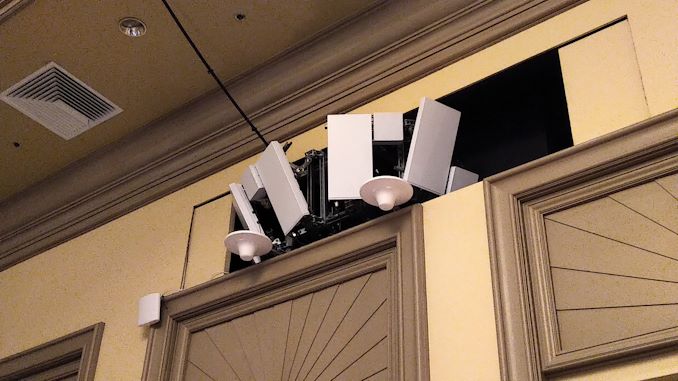
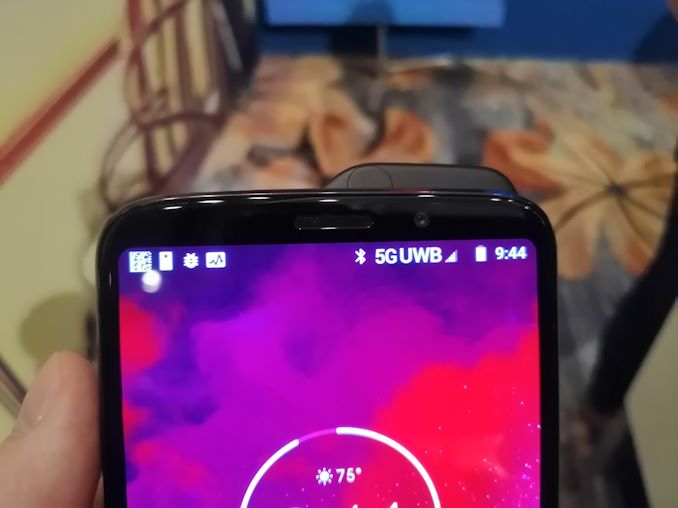

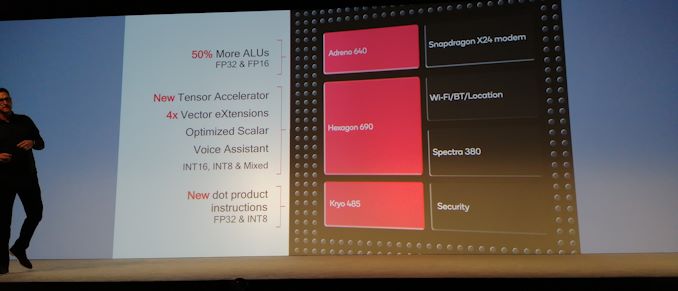
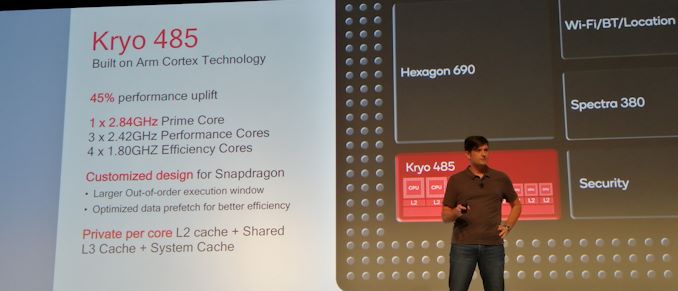
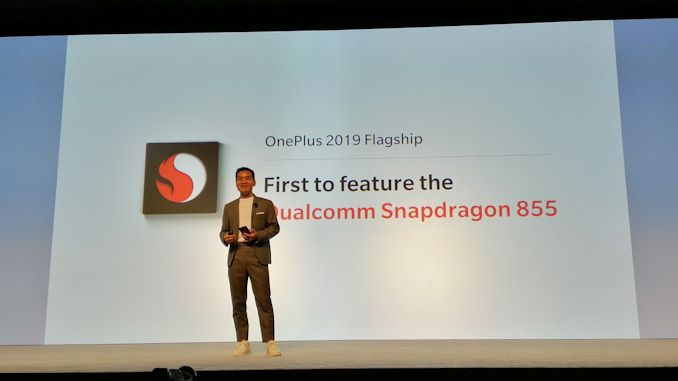
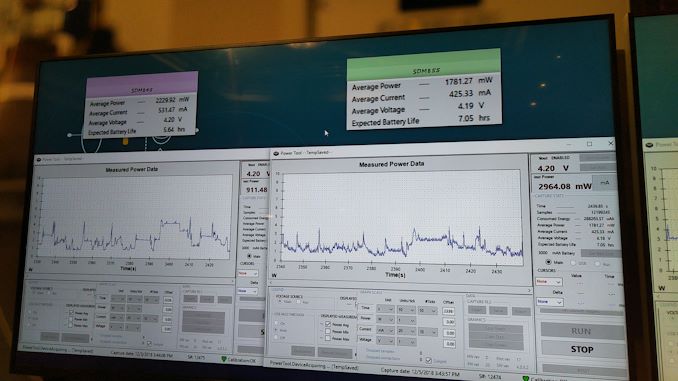
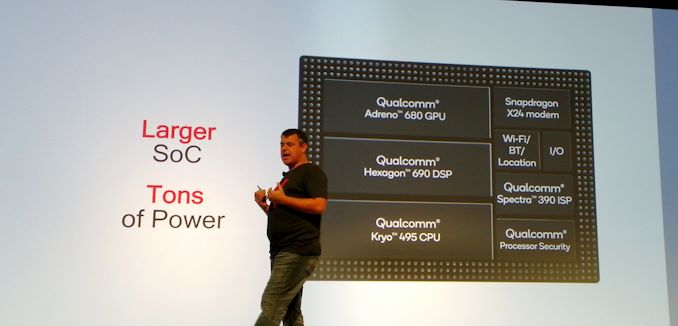
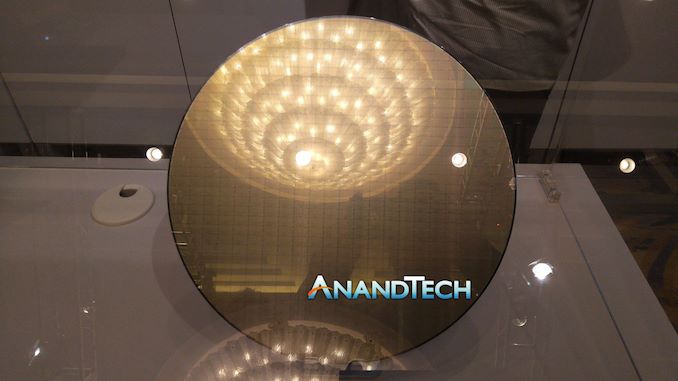
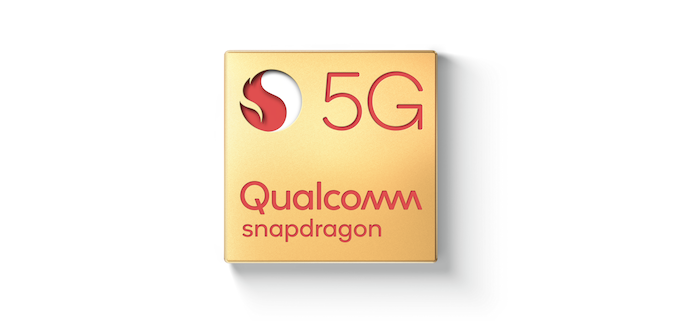








18 Comments
View All Comments
eastcoast_pete - Wednesday, December 19, 2018 - link
@Ian: Thanks for the summary and for coverage of QC's event, also @Andrei.Two questions; Did anybody have comments on the range of mm wavelength 5G when walls or other solid objects were in between hotspots and device? Given the nature of mm radiowaves, even a simple paper pad right in front of the mobile could deteriorate reception drastically. Did you/anybody else try?
The other question concerns the 8cx: yes, it's "for enterprise use", but: I wonder if MS might explore this chip for use in one of their next xBoxes, especially if they are adding a Switch-like portable device to their lineup. That being said, Nintendo might want to take a look at the 8cx for their next Switch, too. Any rumors, overheard conversations? Thanks!
Ian Cutress - Wednesday, December 19, 2018 - link
Ah I never did parse what the demo video said in the first keynote. From my notes:mmWave at 1 Gbps up to 3000 ft away, 800 Mbps at 1/3 mile
800 Mbps with non-line of sight at a few hundred yards
900 Mbps through two US walls
Note we couldn't touch the demos at the event, except to press go. Lots of reflection in the room too.
For the 8cx, no rumors on console use. What's the TDP on the Switch? The chip is designed for fanless notebooks/2-in-1s, so it'll probably do well in a handheld.
Death666Angel - Wednesday, December 19, 2018 - link
"through two US walls" it's an easy joke, but I'm still gonna make it: they could've just said "an inch of papier-mâché". :Peastcoast_pete - Friday, December 21, 2018 - link
Ian, thanks for the reply and information. The TDP of the Tegra X used in the Switch is quoted as 15 Wh and 10 Wh by Nvidia. Since this SoC has both Nvidia graphics and 4 not very efficient A57 big cores, that sounds about right for the Switch's chip, although Nintendo may throttle it for mobile use. However, with those numbers in mind, the 8cx would be right at home in a portable gaming device, and certainly be more than competitive with the now outdated Tegra X.zamroni - Thursday, December 20, 2018 - link
Xbox needs strong GPU. I guess Adreno is not up to the task. Yes, it can still use discrete gpu, but it will need AMD/Nvidia to create Arm64 driver.eastcoast_pete - Friday, December 21, 2018 - link
I would still like to see a head-to-head comparison of an 8cx device with a low to mid-end setup with discreet graphics. QC makes a lot of noise about how beefy the Adreno 680 is; the sheer number of ALUs etc. is certainly much closer to current lower end discreet graphics than to current gen Intel embedded (aside from Iris graphics with Crystal well cache). With Windows ported to ARM, that comparison would now be a lot more apples to apples.Ashinjuka - Thursday, December 20, 2018 - link
I'm not an engineer or a scientist, I'm just a lowly field technician, but I cannot fathom how the high-frequency technology of 5G mm wavelength radios is going to work worth a damn inside a structure. Even standing in open air with clear LoS the numbers look abysmal to me.Maybe the manufacturers are hoping and wishing that consumers and businesses will be so starry-eyed for this tech that they'll be willing to pay big money to install a micro-cell every 500 feet, on the roof of ever building, on every lightpole, with a repeater in every internal room.
It looks to me like 5G at this point is little more than fancy, expensive, allegedly-low-latency WiFi. I am yet to see the positive cost/benefit.
Ian Cutress - Thursday, December 20, 2018 - link
One of the use cases Cristiano mentioned was that a location covered in Wi-Fi mesh can have a 5G-to-mesh AP outside the property, so users inside are enabled through that.eastcoast_pete - Friday, December 21, 2018 - link
That makes sense. Given the power requirements and sensitivity to obstacles, 5G for mobile makes little sense to me. Also, is there any good information on the long-term effects of exposure to mm radiowaves at the much higher power levels 5G devices use? I am not so worried about regular mobile phones, but 5G radiation levels sound a lot higher. Not sure I want to have that so close to my body 12-15 h/day.Dolda2000 - Saturday, December 22, 2018 - link
I wouldn't be too worried about the mm-wave radiation as far as health effects go. It's still not ionizing by any means, so heating is the only measurable effect it should have.